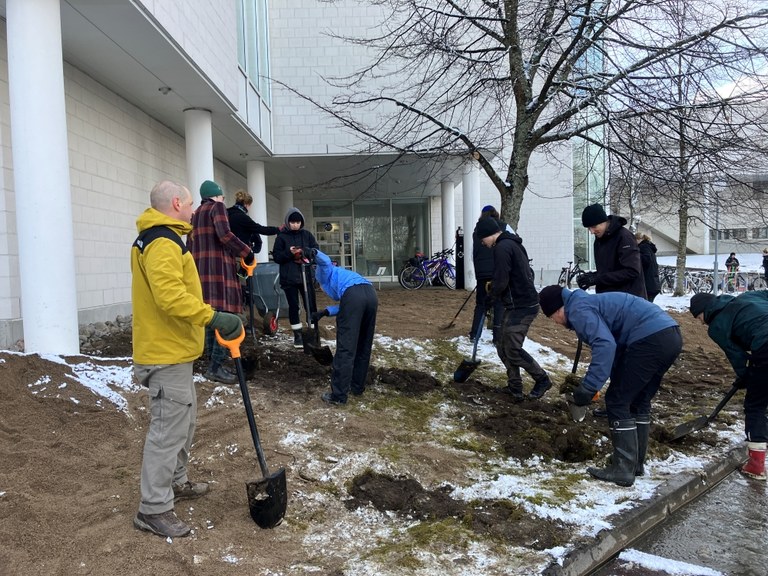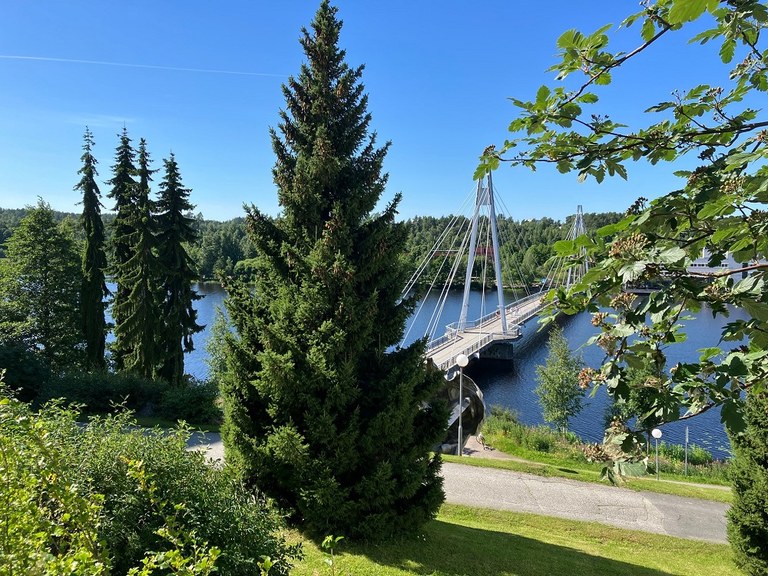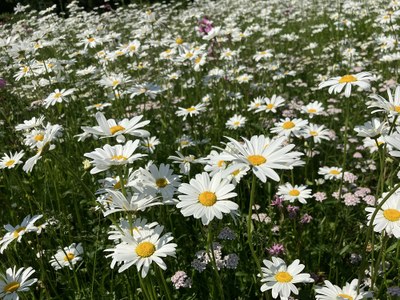Meadows on campus
The lawns have been turned into meadows in several places on the University’s campus areas. At their best, meadows serve as oases for biodiversity, which help endangered species (insects and plants) survive, especially in an urban environment. For more about different campus meadows, see below on this page.
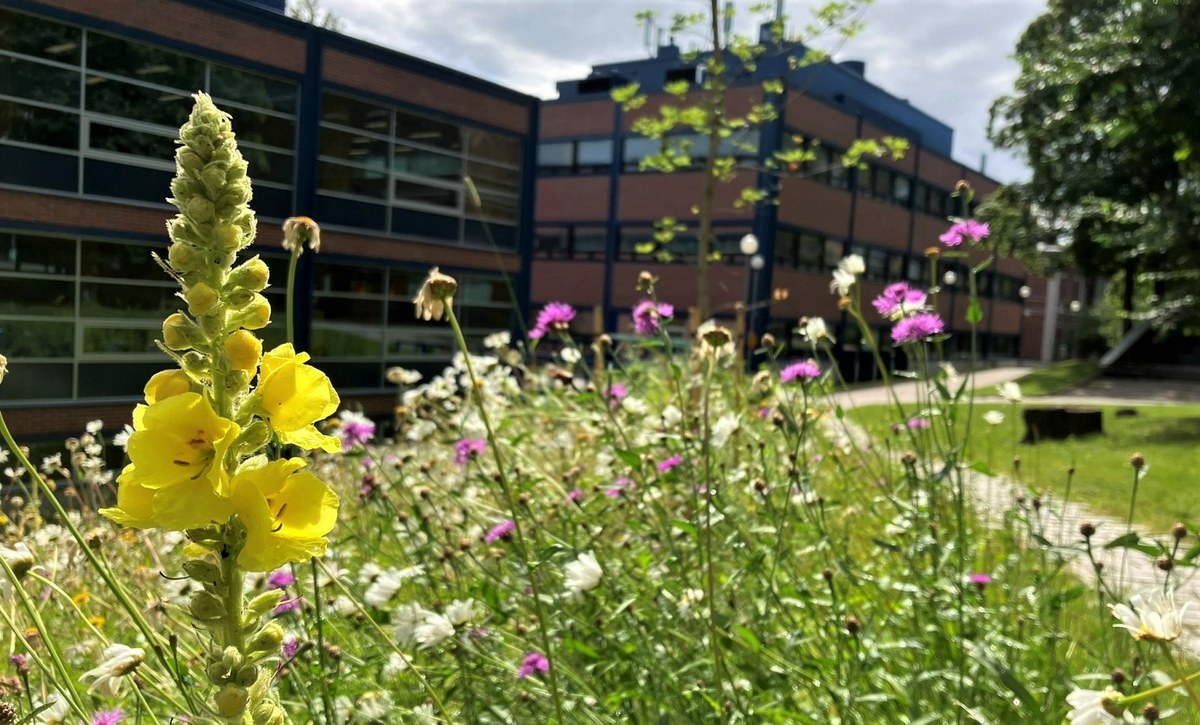
By changing a lawn of a few species into a meadow habitat for a wide variety of species, we can enhance urban biodiversity. Meadows develop slowly and call for care during their first years. A developing meadow area may seem somewhat barren at the initial stages, but diverse plant populations will gradually occupy it, turning it into a blossoming environment for a variety of species. In areas that are currently becoming meadows, one should avoid trampling and collecting plants. Letting the vegetation develop in peace ensures a good local seed pool and thereby flowers for the coming years.
Within the Botanic Garden, we have established meadows both in old lawn areas (fresh and lush meadows) and in sandy ground (dry meadows). Usually, when establishing a meadow, we need fine sand to provide a suitable growing ground for the seeds. In rich soils the imported sand makes the ground more favourable to meadow plants usually adapted to less fertile ground.
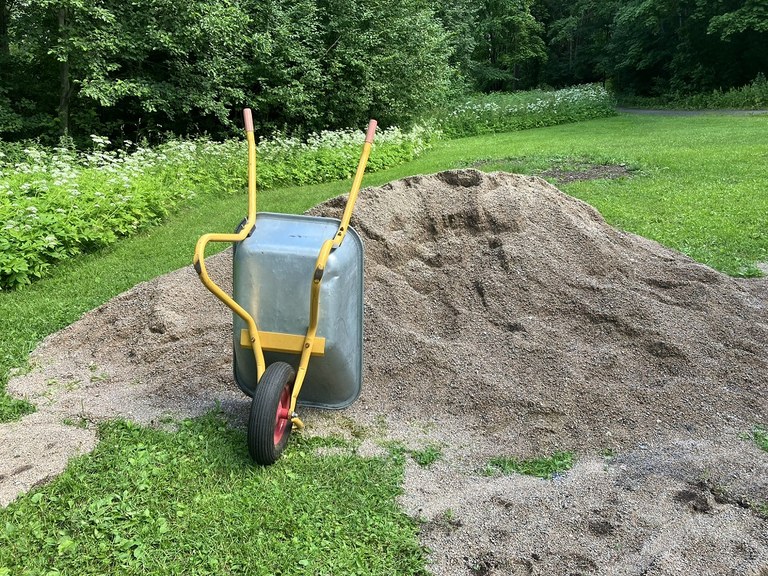
The underlying lawn is either removed altogether or the lumps of weed are turned upside down and covered by a layer of sand after packing the ground. Transporting the material away from the area to a waste management site would increase the negative environmental effect of the meadow project and therefore the entire soil material has not usually been replaced in these places.
The meadows are usually treated by cutting down the plants once at the end of summer and leaving the cut material for a few weeks so that any remaining seeds end up in the ground. Eventually, the cutting waste should be gathered away so as to keep the local nutrient level sufficiently low and better suitable for the meadow plants on this site year after year. Meadows often call for weeding of aggressively spreading or invasive species in order to maintain local biodiversity.
On the campus meadows, different commercial Finnish meadow seed mixtures as well as smaller quantities of locally collected seeds have been sowed depending on the biotope. Ideally, we should collect the seeds from local plant populations, but this requires systematic and long-term efforts, knowledge of seed ripening times, and also sufficiently strong meadow plant populations already growing in the region. In the future, we hope that we can collect larger quantities of seeds from our own local plant populations for future sowing.
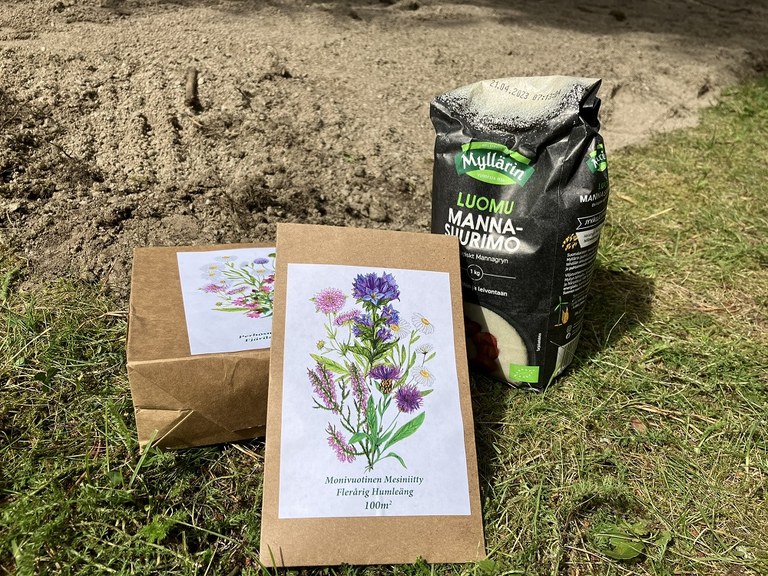
The biodiversity of lawn areas can also be increased by offering food for pollinators by planting flowering plants that blossom early in the spring. On campus lawns, there are large growths of, among others, scillas, striped squills, corydalis, and lesser celandine. Wildflower plants are also allowed to flower on the lawn before mowing.
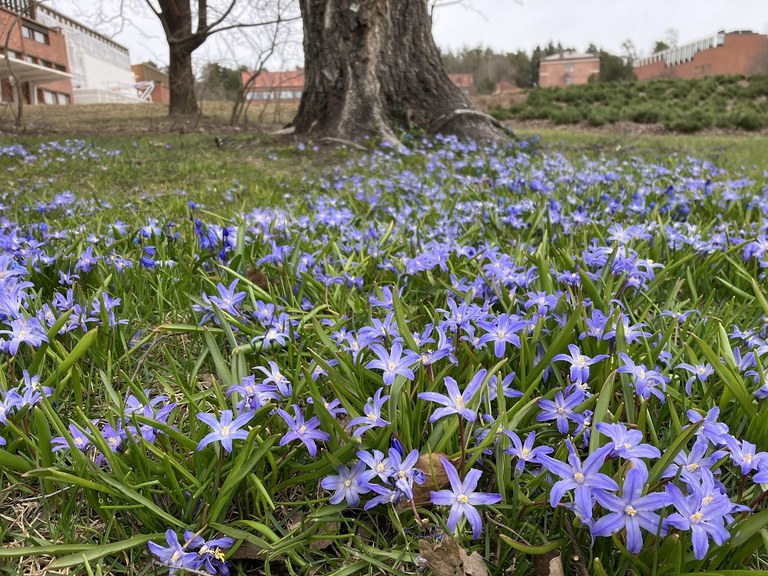
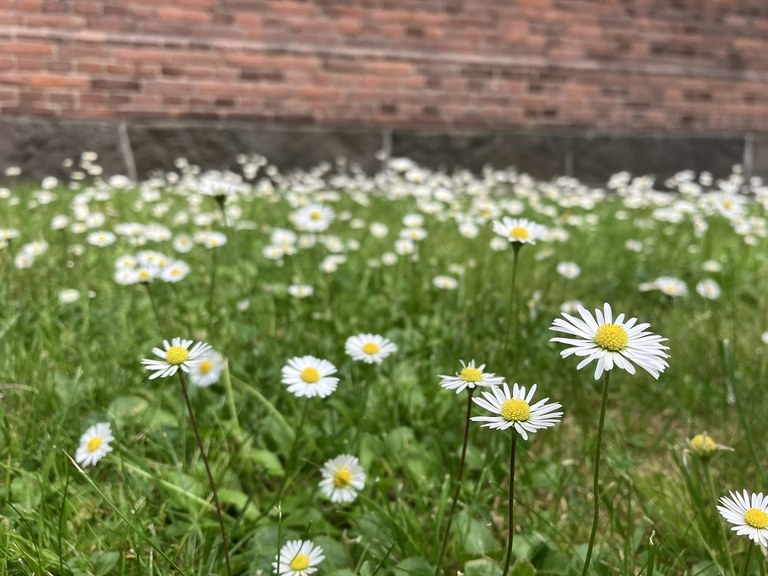
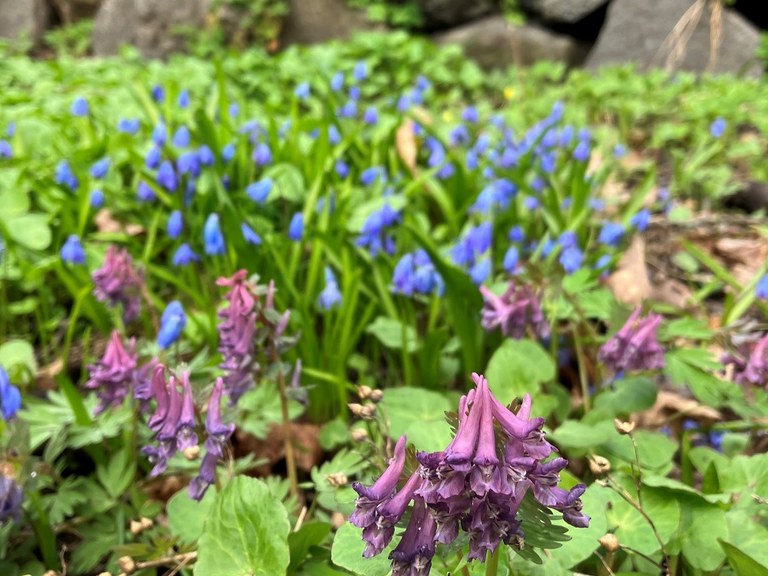
Campus meadows
There are several naturally developed meadows on campus. In these places, we seek to preserve the multiple wild species growing in the area so that grass cutting has been reduced or stopped altogether. A natural meadow develops on site by little steering (i.e. by weeding of undesirable aggressive species) and letting the plants grow otherwise in peace.
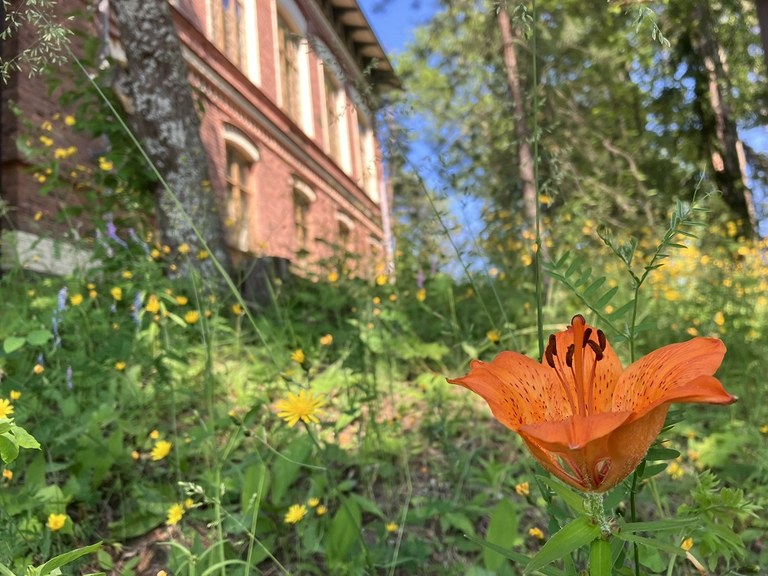
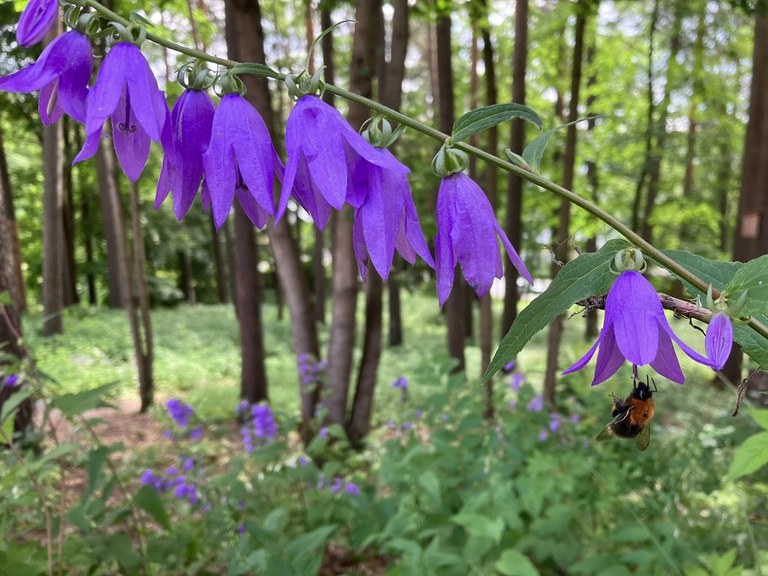
The slope meadow next to the Library (B)
Designed by Maisemasuunnittelu Hemgård Oy 2019
Implemented at the backside of the Library Building in conjunction with the comprehensive refurbishment, in line with the notion of ecological compensation. On this site, the locally gathered soil material with related seed pools were used and some previous, temporarily removed meadow plants were replanted. In connection with the meadow, there is now also a naturally dynamic bush planting consisting of multiple species and equipped with biodegradable protective materials against ground erosion. In addition, there is also a deadwood hedge on this site.
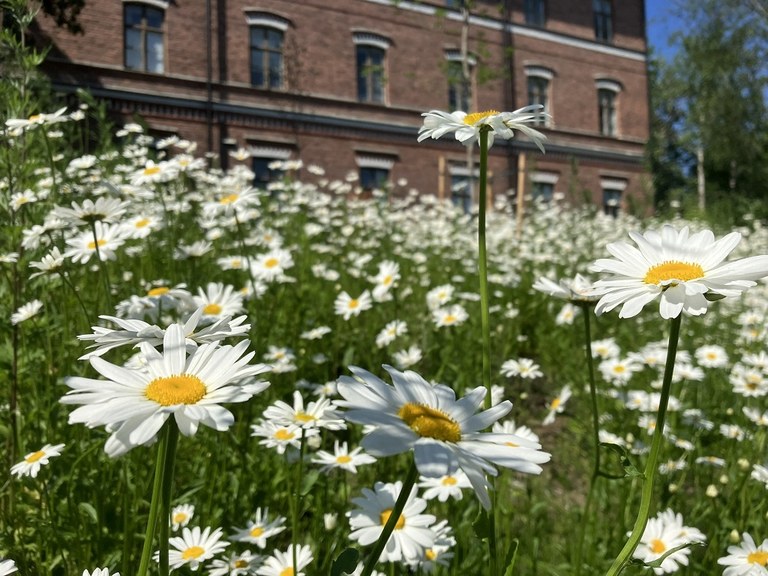
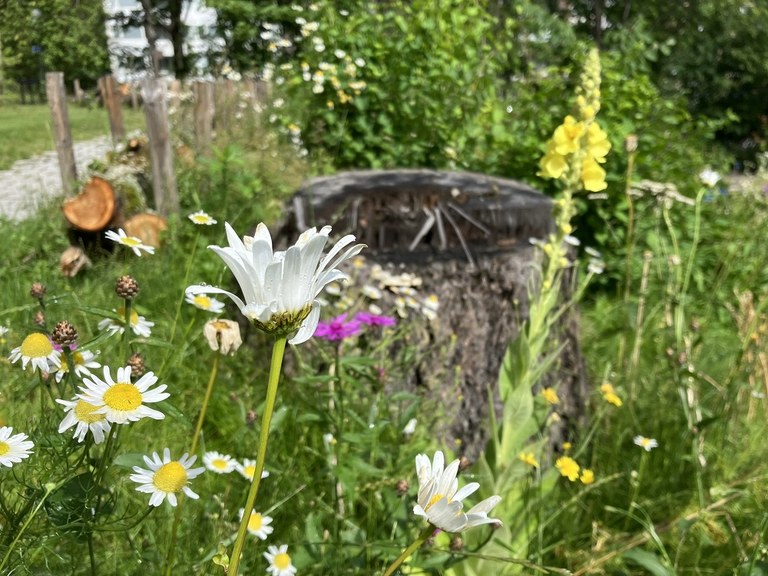
Other meadows at Seminaarinmäki and Aalto Park
Behind Building G, on the old moss-ridden lawn a meadow was established as volunteer work in 2022 in cooperation with the Botanic Garden coordinator, JYU researchers, the Fading Nature project, and the Jyväskylä Festival. From now on the area will be maintained by its owner, University Properties of Finland Ltd, together with TL-Maint.
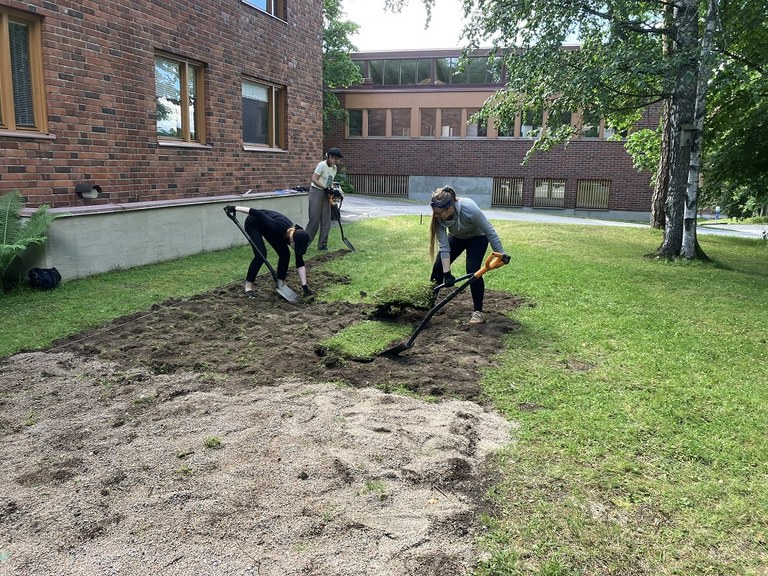
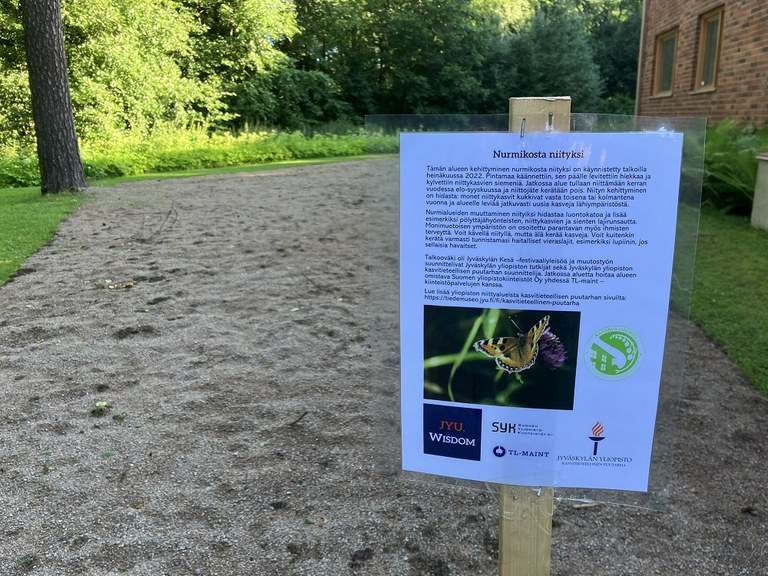
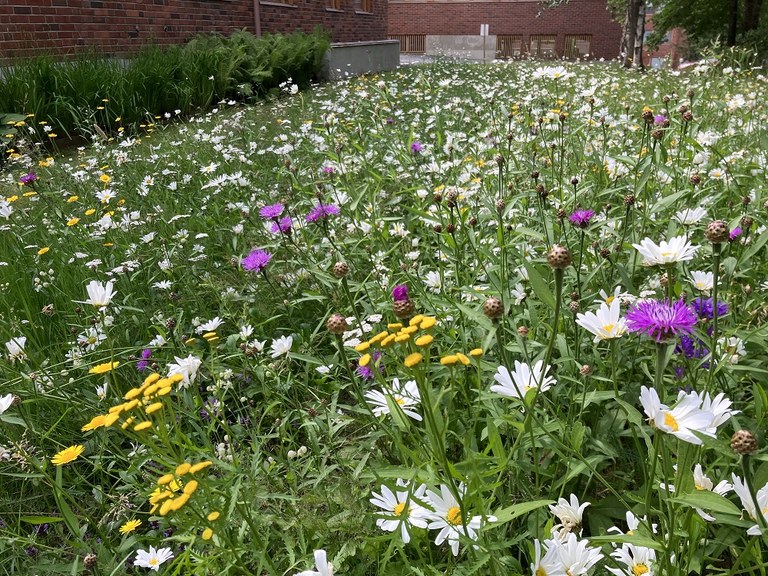
In 2022 in Aalto Park, a meadow was established in front of Proxima (X) under trees that were part of a former planting area from which the invasive species of Japanese rose (Rosa rugosa) was removed. The site is a challenging one for a meadow because it is located under trees and, despite protection efforts, the pupils of the nearby school wear the ground out. The site will provide valuable data on the durability of the meadow under such challenging conditions.
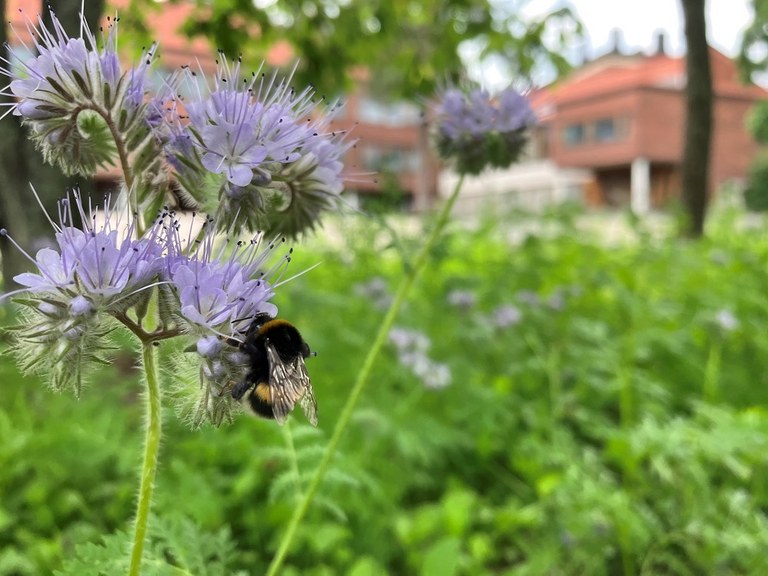
On Seminaarinmäki, more meadow flower seeds have also been sowed in areas that the natural habitat of wild plants, like in the hillsides surrounding the Gardener’s House (J).
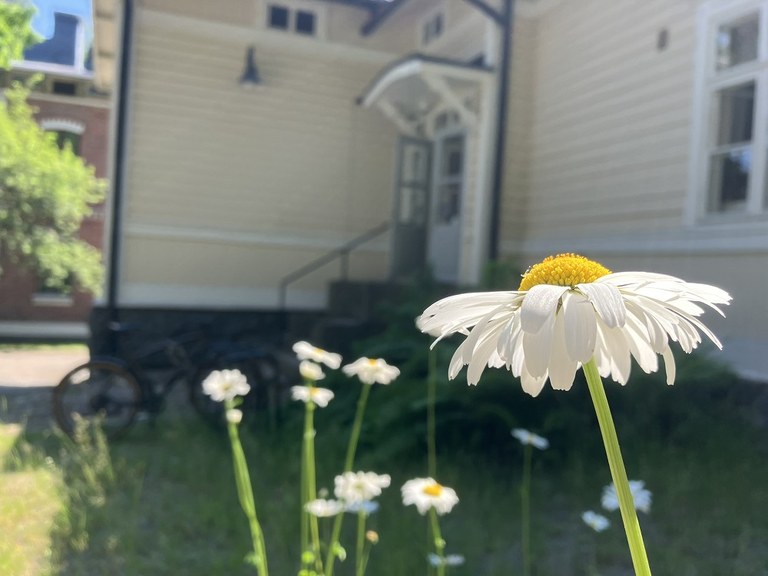
The so-called Pitkäkatu meadow is a large and lush meadow behind Liikunta (L), in between the old Pitkäkatu premises and the Hippos area. A narrow walking path winds through the meadow and the area looks especially wonderful when cranesbills are in bloom around mid-summer.
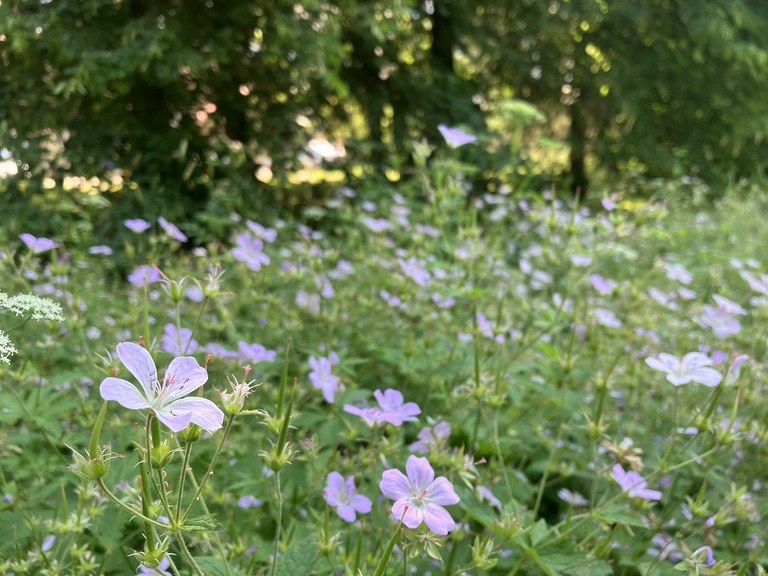
According to Alvar Aalto’s original plans, the roof of the Main Building’s loggia (currently a canopy for bicycles) is furnished with turf sowed with sheep fescue. More recently, meadow flower seeds have also been sowed on the roof, but the packed turf has proven to be rather challenging ground for growing. The development of the meadow is being monitored, and new seeds will be sowed.
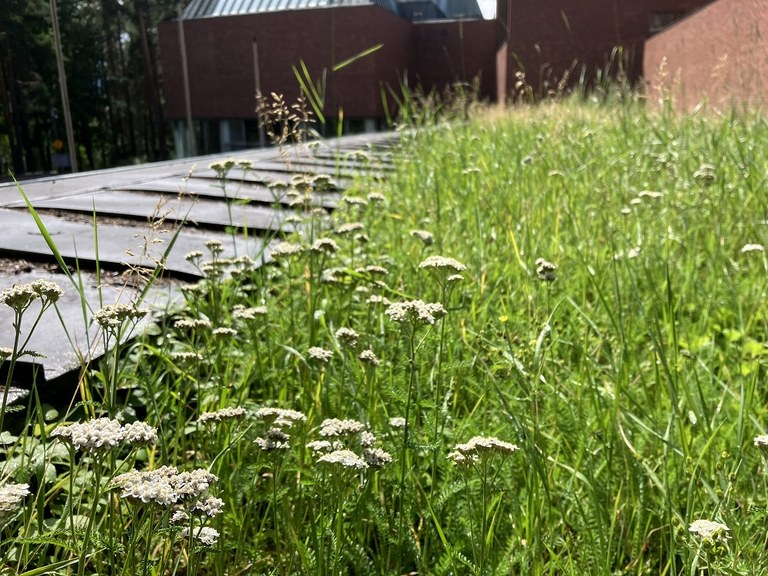
Meadows at Mattilanniemi
In 2021 volunteers working in cooperation with JYU researchers, the Fading Nature project, and Jyväskylä Festival helped establish meadow areas in the large lawn areas of Mattilanniemi. The area will be maintained by its owner, University Properties of Finland Ltd, together with TL-Maint. The area includes a meadow established on a lusher lawn as well as a dry sunny meadow established on a less rich sandy ground.
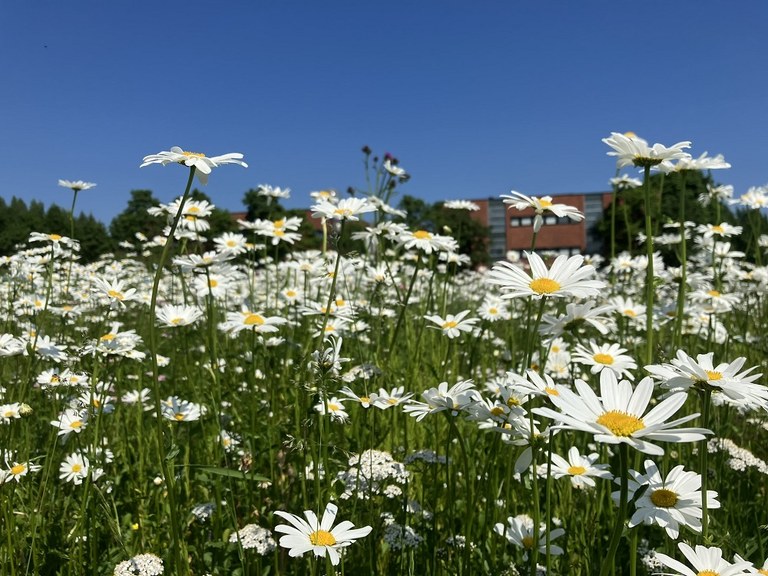
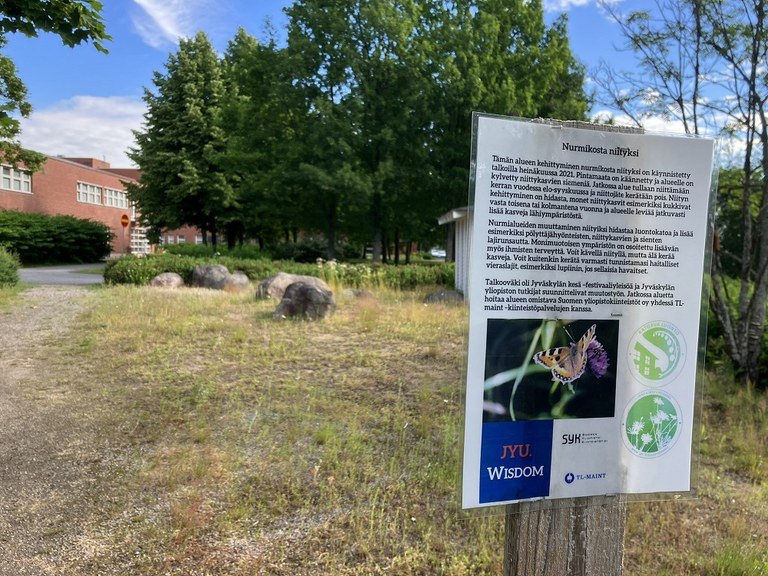
There are also a few meadow areas established in 2022 which are located next to the parking lots, for example.
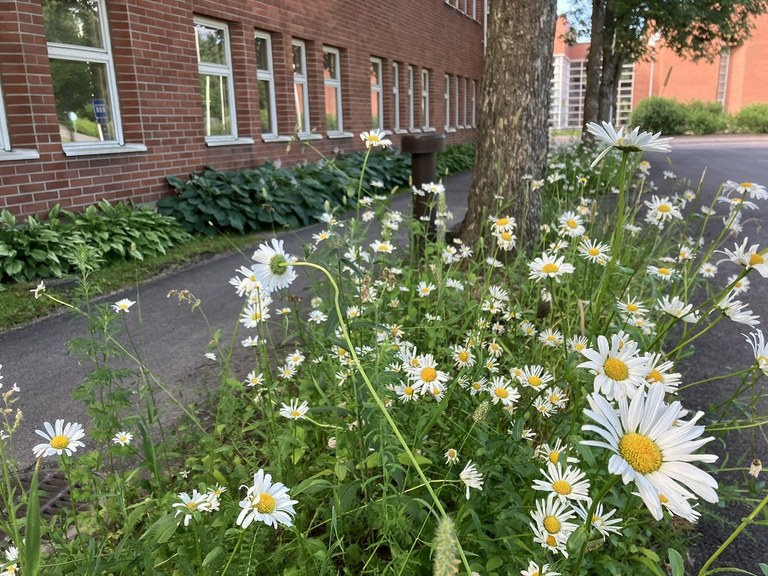
Ylistönmäki
Ylistönmäki is one area targeted for meadow development in the coming years. At present, related experiments have been carried out by scalping, such as on the steep slopes next to the Ylistönrinne stairs. A scalped meadow refers to a site where among the existing grass some patches of about one square metre are made by removing the topsoil with its vegetation and replacing it with meadow soil and sand to be sowed with meadow plant seeds. After this, the meadow plants are allowed to spread naturally by seeding to other lawn areas as well.
There are two new meadow areas at the entrance of Ambiotica / Physics department. Plantings of indigenous plant species have been made 2023 and a part of the area is to be sown with locally collected seeds. The seeds have been collected by the students of JYU and the areas have been designed by the botanical garden coordinator with the help of Minna-Maarit Kytöviita from The Department of Biological and Environmental Science. Some deadwood has also been added to the areas. Biochar and limestone has been mixed with the soil to improve the conditions of the plants.
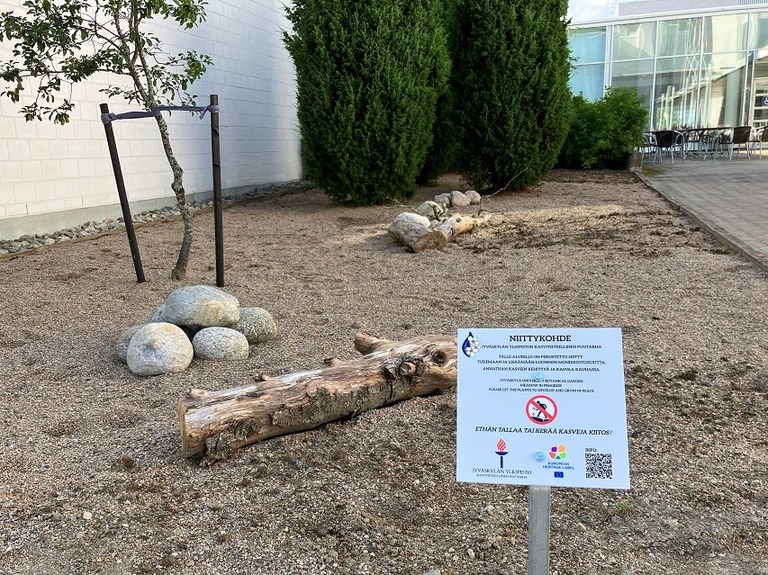
At the lower entrance of Ambiotica a meadow was sown 2023 with the help of the student union for the students of Biological and Environmental Sciences at University of Jyväskylä (Syrinx ry) and Panu Halme from The Department of Biological and Environmental Science.
